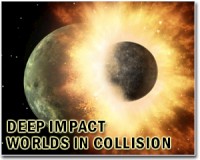 |
Moscow, Russia (RIA Novosti) Jan 13, 2010 An unusual space body with parameters similar to a man-made object will approach Earth on Wednesday at a distance about three times less than the moon's orbit. The object, named 2010 AL30, will fly by Earth at a distance of at least 128,000 km (about 80,000 miles) at 12:48 GMT. As it is some 10-15 meters long, there is no chance it will directly impact the planet. According to Italian scientists Ernesto Guido and Giovanni Sostero of the Remanzacco Observatory, it has an orbital period of almost exactly one year and might be a man-made object such as a spent rocket booster. Alan Harris, senior researcher at the U.S. Space Science Institute said, however, the object had a "perfectly ordinary Earth-crossing orbit." "Unlikely to be artificial, its orbit doesn't resemble any useful spacecraft trajectory, and its encounter velocity with Earth is not unusually low," he said. Astronomers will be able to observe 2010 AL30 as a 14th magnitude star in the constellations of Orion, Taurus, and Pisces.
Source: RIA Novosti
Share This Article With Planet Earth
Related Links Remanzacco Observatory Asteroid and Comet Impact Danger To Earth - News and Science
 Russia in secret plan to save Earth from asteroid: official
Russia in secret plan to save Earth from asteroid: officialMoscow (AFP) Dec 30, 2009 Russian scientists will soon meet in secret to work on a plan for saving Earth from a possible catastrophic collision with a giant asteroid in 26 years, the head of Russia's space agency said Wednesday. "We will soon hold a closed meeting of our collegium, the science-technical council to look at what can be done" to prevent the asteroid Apophis from slamming into the planet in 2036, Anatoly Perminov told Voice of Russia radio. "We are talking about people's lives," Perminov was quoted by news agencies as telling the radio station. ... read more |
|
| The content herein, unless otherwise known to be public domain, are Copyright 1995-2009 - SpaceDaily. AFP and UPI Wire Stories are copyright Agence France-Presse and United Press International. ESA Portal Reports are copyright European Space Agency. All NASA sourced material is public domain. Additional copyrights may apply in whole or part to other bona fide parties. Advertising does not imply endorsement,agreement or approval of any opinions, statements or information provided by SpaceDaily on any Web page published or hosted by SpaceDaily. Privacy Statement |